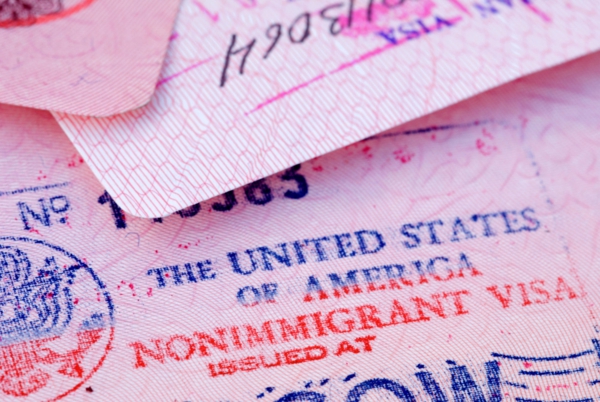International adoption presents the opportunity to grow one’s family while giving hope to a child born into difficult – and indeed often desperate – circumstances. US adoptive parents face many challenges along the way; dealing with the laws and regulations of the United States, the parents’ own state of residence and those of the country from which the child is being adopted can be extremely confusing. Delays in the process and last-minute changes to rules, along with a bevy of other unexpected surprises, can make for a very stressful undertaking. An international adoption attorney or your adoption agency can help to make sense of many aspects of the international adoption process. This article sheds light on one of the lesser-understood features of international adoptions – the US visa process.
Overview – US Visa for Your Child Adopted Abroad
Persons who are not US citizens or permanent residents (i.e., green card holders) generally need to get a US visa before they can enter the United States. A visa is essentially a stamp that goes in an individual’s passport, indicating into which class of persons they fall that allows them to come into the United States. It is what a non-citizen shows to the Border Patrol agent at the airport in the US that proves (with few exceptions) that they are legally qualified to enter enter the territory of the United States. A US visa is issued at a US embassy or consulate abroad after a brief visa interview, during which a consular officer (an employee of the US Department of State) talks to the US visa applicant and decides whether they qualify for the visa they seek.
Because your adopted child will not yet be a US citizen (or green card holder) when you adopt them (or obtain legal guardianship rights) in their home country, your child will need a US visa to enter the United States. This means that you will need to go with them to the US embassy or consulate in their country that has been designated to handle adoption cases in order to have a visa interview and to procure the child’s US visa. The process of applying for and obtaining your child’s visa in an international adoption matter, as well as the type of visa that is actually issued, will depend on whether it is Hague or non-Hague adoption at issue.
Hague vs. Non-Hague Adoptions – A Different Visa Process for International Adoptions
Adoptions to which the rules of the Hague Convention on Intercountry Adoptions apply involve one set of visa regulations, while non-Hague adoptions are governed by separate rules. Your international adoption lawyer or adoption agency can tell you whether yours is a Hague adoption or a non-Hague adoption.
Hage Adoptions
In Hague adoptions, a consular officer decides before the child is legally adopted (or before legal guardianship is granted) whether the child meets the definition of an “orphan” under US immigration law and whether all other rules are satisfied so that the child can get the necessary immigration visa to go to the United States. The consular officer gives her imprimatur by issuing what is called an Article 5 Letter. For a Hague adoption, the adoptive parents file Form I-800A with USCIS in the United States, get matched with a child overseas, and then file Form I-800 with USCIS. Once overseas, the parents file a visa application, using Form DS-230, with the appropriate US embassy or consulate. It is at this point that the consular officer sends the Article 5 Letter to the host government. Next, the adoptive parents formally adopt or take custody of the child, and then go the US embassy or consulate for a brief interview – then the adopted child gets their visa!
The adopted child will be granted an IH-3 visa where the child has been officially adopted overseas, and will become a US citizen upon entering the United States. In contrast, where the child is not adopted abroad, but rather is placed under the legal guardianship of the adoptive parents, an IH-4 visa will be issued. The child does not become a US citizen immediately upon entering the US, but rather gets permanent resident status (i.e., gets a green card). The child must be formally adopted in a state in the US, after which they gain United States citizenship.
Non-Hague Adoptions
Non-Hague adoptions are different. First, the form that normally starts the process is I-600A, filed with the USCIS in the United States. Form I-600 is then filed with USCIS (sometimes in the US, sometimes at a US consulate or embassy abroad, depending on the circumstances). The parents then adopt the child or obtain legal guardianship and then have the US visa interview, at which time they submit Form DS-230.
An IR-3 visa is issued in non-Hague cases where the child has been adopted overseas and certain other conditions are met. The child becomes an American citizen upon entering the US on an IR-3 visa. An IR-4 visa is appropriate where the parents gain legal guardianship but do not adopt the child overseas, making it necessary to adopt the child in the US. The child obtains legal permanent residence upon entering the US (i.e., gets a green card), and gets US citizenship after being adopted in the United States
Author Brad Menzer blogs about various US immigration law issues for the Heartland Immigration law firm. For more information about US visa matters or to speak to an international adoption lawyer please call Heartland Immigration: 1-855-USA-IMMIGRATE. Heartland Immigration is a group of Dallas Immigration Lawyers with satellite offices nationwide.

